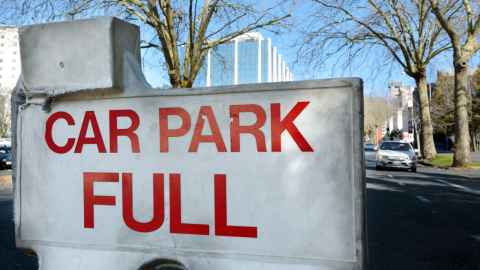Kerb your enthusiasm for cars, Auckland Transport
26 April 2023
Auckland Transport’s decision not to remove kerbside parking signals it will continue to prioritise cars, argues Tim Welch

Recognising how much of our urban space is consumed for car storage, Auckland Transport (AT) made plans last year to remove on-street car parking on some key corridors, to make space for other modes of transport. Of the nearly 7000km of local roads in Auckland, AT planned to remove parking on just 240km of roads (about 3 percent) over the next 10 years. That plan has now been abandoned.
We are facing a climate emergency, growing inequities associated with more car dependence, rising costs of car ownership, increasing injuries and deaths to cyclists and pedestrians caused by drivers, and a long list of other social problems related to the overuse of cars – especially in our cities.
Because our city streets are so jam-packed with cars – queuing in traffic and parked along roadways – our bus network is inefficient, expensive to run and a slower form of transport than driving your own car. The space consumed for car infrastructure also makes life more difficult for those who’d prefer to bike to where they want to go, as there is very little room for safe cycling infrastructure.
Why the change of AT’s plan? According to AT’s design manual, the average length of a kerbside parallel car park is six metres. That means the plan would remove about 40,000 car parks over 10 years, leaving more than 500,000 car parks untouched. The reclaimed road space would make room for more cycle and bus lanes, helping move people around the city more efficiently.
It has been shown time and time again that in places where better infrastructure supports alternative modes of transport, people rapidly shift away from cars.
Part of the reversal has been chalked-up to concerns over consultation. Initially, AT proposed that the car parks could be removed with minimal consultation. Then, AT revised the process to include public feedback before removing spaces.
The Automobile Association, some business associations, and other car-oriented entities and individuals have applauded the cancelled plan, citing the dire need for parking to feed customers to local shops and keep the city accessible.
But these groups all suffer from “windshield bias” – the tendency to view transportation through the lens of the driver of a car. People who predominately drive a car also assume most people want to navigate the city by car. But it has been shown time and time again that in places where better infrastructure supports alternative modes of transport, people rapidly shift away from cars. For example, in recent years, London has heavily invested in bike infrastructure, and this year bike trips now outnumber car trips.
Contrary to popular perception, or perhaps the perception of retailers, car parks reduce patronage to local businesses and offer far less accessibility compared with cycling and bus infrastructure. A 1km-long road could at most accommodate 166 car parks (even this is unrealistic); on this stretch of road, even if people only parked for 10 minutes, the street could only accommodate 996 people per hour arriving at shops on the street.
A single 1.8m-wide bike lane can accommodate 12,000 people an hour, and a local bus lane can carry up to 5,000 people an hour. Removing car parks for cycleways or bus lanes would mean that at least five times more people can access that street every hour.
We are also facing a public transport crisis. A string of articles has shown how unreliable the Auckland bus network has become in recent years. With more than 1,000 bus cancellations daily in Auckland, people are turning away from this crucial mode of public transport. Some of the cancellations are because of buses being stuck in traffic.
It’s impossible to get buses around the city on time or to find enough drivers for all the buses needed to make routes with lots of traffic. Prioritising bus lanes over car parking would mean we need fewer buses running, and they would be far more reliable.
Providing ways for more people to get out of cars and on bikes or buses is also a massive boon to achieving our climate targets. Last year, Auckland Council released its Transport Emissions Reduction Pathway with the goal of cutting greenhouse gas emissions by 50 percent by 2030. To achieve this goal, the city must reduce vehicle kilometres travelled by 50 percent and increase the share of walking, cycling and public transport trips to 22, 17 and 27 percent, respectively, in the next six and half years. None of this will be achievable without making a lot of space for these modes of transport.
Our obsession with and dependence on cars is also extremely expensive. The cost of car ownership is about $21 a day or 13 times the cost of cycling and about three times more than public transport with a full-price ($215) monthly bus and train pass. With the current cost of living crisis, it makes sense to give people the option to leave their car at home and use a much cheaper mode of transport.
AT’s decision not to remove kerbside parking clearly signals it will continue to prioritise cars. If we want Auckland to be a great place for people, and not just our vehicles, we’ll need to have the will to make some changes, including taking away a few car parks.
Dr Timothy F. Welch is a Senior Lecturer in the School of Architecture and Planning in the Faculty of Creative Arts and Industries.
This article reflects the opinion of the author and not necessarily the views of Waipapa Taumata Rau University of Auckland.
This article was first published on Newsroom, Kerb your enthusiasm for cars, Auckland Transport, 26 April, 2023
Media contact
Margo White I Research communications editor
Mob 021 926 408
Email margo.white@auckland.ac.nz